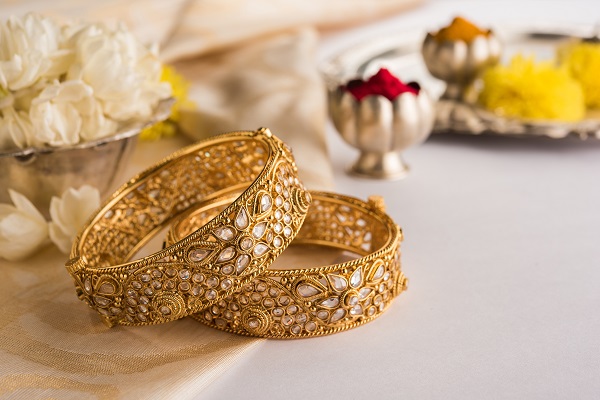05 October 2021
Key-Note
Gold Rush, New Season!
In an engrossing conversation, Mr Somasundaram PR, Regional CEO, India, World Gold Council spells out to Mr Yogesh Mudras, Managing Director, Informa Markets in India, how increased formalization of the
jewellery industry will propel the sector to the next level – and so much more!
Yogesh: The question on everybody’s mind! With the golden run of the stock markets -- would you advise on buying gold as a strategic investment currently or as a possession?
Somasundaram PR: Gold will always cater to both purposes, although in India, the investment purpose will remain subservient to the ornamental properties. The ornamental value becomes clear when we know customers are willing to pay for labor charges as well. Of course, while fewer go for gold as explicit investment, there is still the fact that consumers prefer 22 carat jewelry, rather than an 8 or 12 carat. They wouldn’t, had they been looking for ornamental value alone. If you are specifically looking for investment in the bullion, you will avoid the labour charge, opting for channels like ETF's, digital gold, bars and coins. Generally, jewellery makes sense -- there is the solace that your gold ornaments can be encashed anytime -- you can take a loan against it, or you can sell.

Yogesh: I agree. Recently, a leading Jewellery told me that their industry can never go out of fashion. From women’s perspective, it's that intrinsic value of owning a precious possession while from the male perspective, we are happy to see this asset class grow. Quite a win-win situation.
Somasundaram PR: Absolutely! You could have various asset classes where the ownership could be shared or managed by different members. But every household will acknowledge that gold jewellery belongs to the Lady of the Household. This is one asset class which is entirely handled by the women, so it gives them a lot of independence as well.
Yogesh: What is your take on the mandatory hallmarking rules that will now be implemented in phases after first coming to effect in June? Any other policy initiatives to formalize the sector further?
Somasundaram PR: The concept of hallmarking has been evolving in India for the last 20 years, so the mandatory hallmarking hasn't come a day too soon. I believe it is extremely important for a country like India where gold is bought in every nook and corner. It is equally beneficial for the smaller jewellers who don’t have the resources or strategies like organised players and rely on old relationships. In a world of alternatives, though, relationships count only so much. Customers may have a soft spot for their neighborhood jewellery store, but they can easily be allured by the digital marketplace. Hallmarking creates a level playing field in this ecosystem. If hallmarking is truly embedded in this industry, you could walk into any jewellery store, and buy jewelry confidently. It works in favour of the small jewellers because they can then start focusing on their designs and can upskill.

What happened this time was a classic case of teething issues. There were some concerns that the HUID -- the unique identification code given to every piece of jewellery at the time of hallmarking, -- could lead to traceability of gold. Also, the announcement had jewellers rushing in large volumes to hallmark their jewellery, leading to delays due to software issues. This exacerbated the situation and many industry leaders felt that the pandemic was not the right time to implement it. The government has now resolved the situation and will implement it in phases. Additionally, other initiatives, like the spot market framework that SEBI recently announced will cumulatively move the industry forward, making it more organised and profitable.
Yogesh: Your take on the e-commerce market in the G&J sector? Speaking of which, what are the design trends for the upcoming high season?
Somasundaram PR: When it comes to E-commerce, we are still at a nascent stage, though COVID-19 has accelerated its growth in manifold ways. Considering that G&J is a traditional industry, how this will play out is to be seen. When it comes to gold for instance, the joyful physical experience of choosing and buying is important. A consumer can buy gold ornaments digitally, while also relishing the physical experience of choosing a design. So, e-commerce players need to integrate this aspect of consumer delight ----give them the touch-and-feel experience from the comfort of home before buying, perhaps digitally. Again, e-commerce can also be about gold investment initially. Customers can conveniently buy gold through digital platforms like Amazon, PhonePe and Paytm and convert it into jewellery later. This helps Jewellers too as once consumers have bought gold, they will eventually make an ornament out of it.
Coming to design trends, at World Gold Council, we have recently launched this ‘You Are’ category campaign that showcases not just traditional designs but something close to millennials and their world as well. The tag line is, ‘Every moment that makes you, you’. This emulates the trends of lightweight modern jewellery though the traditional is definitely not going out of fashion. This flexibility, we believe, will lead to a lot of gifting, and will also spur further innovation in the industry. This Diwali, there will be lots of celebratory gold display for. What we hear is that many people have had a lot of savings, although the other side of losses for others is also true.
Yogesh: With the 100 percent FDI allowed by the Govt, do you see a bounce back in exports? What strategies would you advise to re-engage with the market abroad?
Somasundaram PR: Added to the domestic exchange, an international bullion exchange pilot is coming that aims to bring all the market participants at a common transparent platform. When we look at exports, there are two specific segments-- the export of jewellery and of bullion bars. Currently, our exports are rather controlled in terms of value addition norms. The margins are wafer-thin in case of bullion while for jewellery, it is maintained at 2-3 per cent. Indeed, jewellery exports have done rather well as even other economies are also recovering and looking at gold as a form of investment and ornamentation. Once again, people world-wide want to cherish the good moments of life and one way is through gold. That sure is helping our exports!
Again, it’s the aggregation of policy initiatives that are being undertaken currently in terms of accessibility of gold, regulatory control, hallmarking initiatives, and improved delivery initiatives through which we will see India emerging as a very significant exporter of jewellery and bullion, though that's a few years away. To top it all, there is the power of digital, which India is thinking through and striving to execute on a global scale. All these aspects will drive our gold exports.
Yogesh: Finally, leadership mantras that you uphold:
Somasundaram PR: Firstly, leaders should be true to themselves. And the one thing I truly believe in is that since the world is changing so fast, remember to always keep an open mind. There are other elements, of course, like passion, the drive to succeed, the kind of contribution you can make towards society as a leader et al. But the one thing that really sticks out in my mind is to never be stuck with what you know. There’s so much out there – just learn!